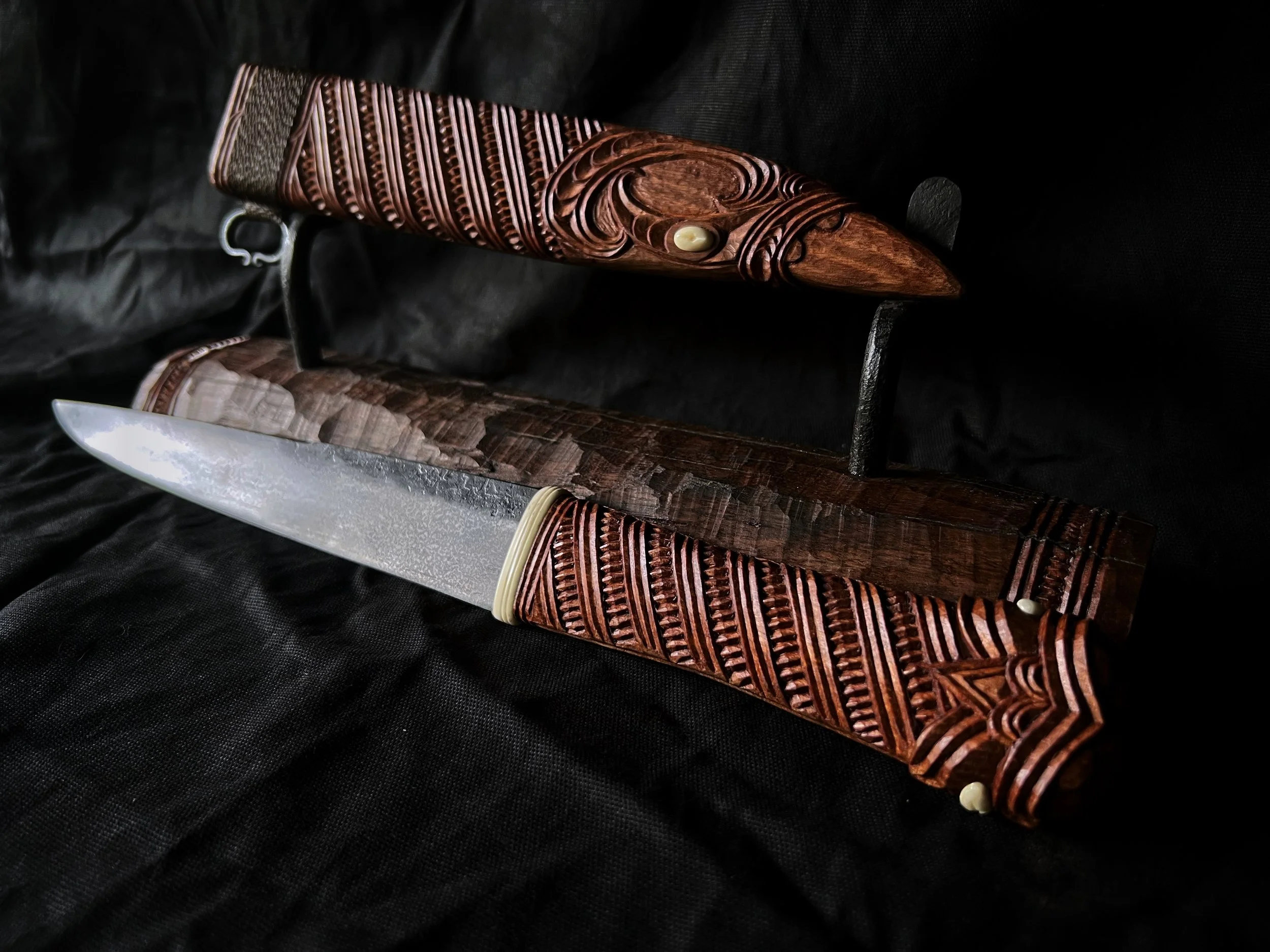Toi Rino
Nihoroa and pūkoro, made from steel and tōtara. Take a closer look here.
What is toi rino?
toi: (noun) summit or pinnacle.
rino: (noun) iron/steel.
Toi rino is the aspirational pinnacle of my craft. It speaks of excellence, and more importantly, the journey to achieve it.
Toi rino is also the term I use to describe an exciting new area of my craft, where I will explore the creation of iron and steel Māori weapons, tools and adornments.
The whole kaupapa is centered around the question: What if our tūpuna had iron-working technologies?
From that first question, a line of others sprang forth. What would we have made? How might we have come by this technology? Through organic discovery or through contact with other cultures?
If the former, then how would that have changed our tools and weapons?
If the latter, then from which culture? What if Māori had first contact with, say the Japanese? Or Norse explorers? How might that have influenced the creative process and outcomes?
To my knowledge this never happened, or if it did, it never fully blossomed and bore fruit, but the creative potential fills me with excitement. Imagine the possibilities.
What if a taiaha was created using European swordsmithing techniques? What would that look like?
What if a Māori had trained under a Japanese swordsmith? What may they have produced?
What if Māori had learned to extract iron from Papatuānuku? How might that have shaped our world?
A patu rino, made from wrought iron with a hardened steel core. Check it out on Instagram
As fas as we know, Māori had first exposure to iron as a material for tools through contact with the European explorers in the 18th century and our people very quickly recognised the great potential of iron as a tool.
You may have heard or read stories of our people prying iron nails from the boats or Europeans, to then be repurposed into various implements like whao (carving chisel).
In Te Kōngahu, Waitangi Museum there is a placard beneath a kakauroa (long-handled axe) that speaks of the exchange of 12 axe heads for the right to occupy 80-hectares of land. To my ears that sounds like Māori being taken advantage of but it also illustrates the value that our tūpuna placed on iron at the time.
Our people were fast to adopt new ideas and technologies, the musket being a prime example. A carver friend of mine reckons we would have made waka from fiberglass if we had it.
As I alluded to earlier, it appears that iron was never fully adapted into traditional Māori arts and technologies, and I can only assume it’s because the world changed very quickly in those early years of colonisation. I don’t doubt that some Māori learned to become blacksmiths and engineers, but as far as developing Māori weapons and tools goes, I guess the need just wasn’t there. The musket changed the face of warfare and most tools were already well developed by the Europeans and readily adopted by Māori.
However, that’s no reason NOT to explore those hypothetical, what if? scenarios. It’s never too late to start, right?
So that’s what Toi Rino is about. An exploration into what Māori might have made using iron technologies. Hell, I am Māori so really it’s an exploration into what I will make through the fusion of cultures and techniques.
I’m excited and I hope that you’ll follow me along on this journey.



